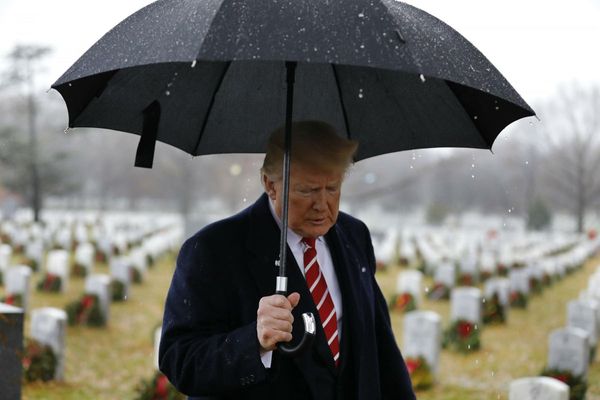
Australia’s media have a tricky question to work through: when will Anthony Albanese have become sufficiently prime ministerial to be prime minister?
That could be some time, judging by the press gallery’s continuing sense of bewilderment at just how the election ended up as it did.
For Albanese it’s an urgent political imperative. It drives the narrative of first-term governments — Labor governments more than most. It determines whether they’ll get a second term.
News Corp is already screaming for an all-caps “1000 days of resistance” and at that rate it doesn’t leave much space for a pivot to Labor legitimacy before, say, Valentine’s Day 2025. No surprise. That’s its business model. But based on Fox’s Joe Biden-bashing in the US, it’s set to be far uglier than anything Australians have been used to or are likely to accept.
The rest of the news media need to move on. More important will be the ABC — yet so far it’s struggling. Partly it’s the inevitable stumbles caused by the whiplash from going from one government to the next. For example, its generally successful election night broadcast gave significantly more space to still-Senator Simon Birmingham’s “record low primary vote” than it did to the soon-to-be minister Tanya Plibersek’s “a win is a win”.
Its reporting on Albanese’s first big prime ministerial moment — his participation in the Quad meeting and reshaping of the communique to recognise the climate emergency — was part relief at a gaffe-free performance leavened with amazement that he was there at all.
Time (and pressure from social media) will moderate its tone. The value of each party’s contacts will be repriced. The currency of access journalism — the background briefings out of the PM’s office — will already be from Labor staffers, not Liberals.
But it will take more than a tonal shift for Albanese to get the imprimatur of “prime ministerial” across the press gallery. Reporters have spent the past three years persuaded (or being convinced by those affable leakers from the PMO) that, nice guy as he may be, Albanese isn’t up to it. Even now that the election has punctured that foolishness, expect it to continue to flavour both reporting and think pieces. The gallery loses its convictions slowly — before it does suddenly.
The past 40-odd years of Australian politics has set the gallery up as hard judges. Bob Hawke is probably the last PM to get the prime ministerial stamp from day one. As in all things, Hawke is the exception that proves the rule. Some PMs never get there. What with eating raw onions and dishing out knighthoods, even Tony Abbott’s parliamentary colleagues recognised within two years that, sure, he was a great opposition leader, but prime ministerial? Not so much.
Other leaders seized on events, like Paul Keating with the Mabo decision and his Redfern Park speech or John Howard with gun reform (and later, to the long-term detriment of Australian political life, with Tampa).
It took Scott Morrison 18 months and a global pandemic to become prime ministerial, delayed by his initial deliberate positioning as opposition leader to the Shorten government and then a self-indulgent back-half of 2019 culminating in his ultimately career-destroying Hawaiian holiday.
Bizarrely, having climbed back through his Team Australia management of national cabinet in 2020, he threw it away in 2021 with politicised attacks on the Labor premiers of Victoria, Queensland and Western Australia, neatly turned back on him by Albanese with his “two jobs” failures over vaccination and quarantine.
Labor has attempted to set course for a Hawke-style legitimation since Albanese returned from his COVID-enforced isolation. Party strategists seem to have learnt an important lesson from the first week’s gaffe: the mistake was giving the media a win by apologising. That, they seemed to think, made the press pack hungry for more.
Instead Albanese ditched small target rhetoric for talk of “legacy”. He repositioned the travelling pack as the enemy of “orderly government”. From Saturday night, he turned the electorate’s embrace of a new politics against the pack’s suddenly out-of-date shouty-ness.
He turned the fragmentation of the two-party system into a victory for change. He’s aiming for prime ministerial by delivering on the big demands that the electorate has served up to the political class: integrity through an anti-corruption body; reconciliation through the Uluru Statement from the Heart; serious action on climate; an embrace of diversity and an end to culture wars.
It’s taking the gallery a while to catch on. But these issues, sooner rather than later, offer Prime Minister Albanese the route to prime ministerial legitimacy.







